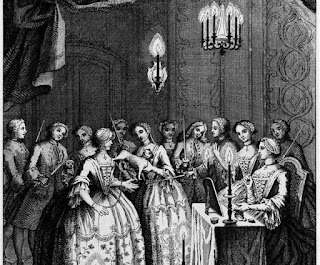Top 10 most interesting historical facts that many people don’t know about the world
1. Pug logo
Because the Pope issued a ban in 1738, prohibiting Catholics from joining Freemasonry. In 1740, Duke Clemens August founded the Pug Brotherhood, which corresponds to the Freemasonry and allowed Catholics to join, and used the Pug as the emblem and symbol of the society. This friendly animal was very popular among the nobles, and the pug also symbolized loyalty and reliability. And they also allowed female members to join the society (this situation was strange and rare at the time). In addition, during the initiation ceremony, the Protestants must kiss the chrysanthemum of the porcelain pug.
2. Tea in every British tank
Since the introduction of Centurion tank production in 1945, most British tanks have installed tea-making equipment: reactors (also called kettles) for high-temperature synthesis. Of course, this appliance can be used not only for making tea, but also for other hot drinks, as well as for cooking and heating food.
3. A pirate attacked a ship to snatch a hat
The famous 18th century British pirate Benjamin Honigold once attacked a ship near Honduras. According to a passenger on this unfortunate ship, the pirates and their crew did not cause any harm to the people, but they ordered all passengers on the ship to hand over their hats.
4. Napoleon and the rabbit
Once, Louis Alexander Berthier (Napoleon’s chief of staff) invited Napoleon to hunt rabbits. For this reason, Bertier purchased a thousand such "long-eared" small animals. But after the hunt began, some accidents happened. For some reason, these little things rushed towards Napoleon in groups, and finally even rushed towards other nobles present. The scene was very chaotic.
The reason for this chaos may be because Berthier did not buy wild rabbits, but domesticated rabbits. When the hunting started, it happened that these animals were extremely hungry, so they rushed towards the crowd quickly, hoping to get food.
5. A dead rider who successfully won the race
This is a sad but strange story. American Cavaliers Frank Hayes won the game after he was already dead. When he crossed the rugged terrain to a pre-established location, he suffered a fatal heart attack and died while he was still halfway away from the target. This major game was held in New York in the summer of 1923. Many people attributed its death to excessive weight loss and excitement during the game.
6. Use childbirth as a performance
In ancient times, the life of the European royal family was very different from that of China. The personal lives of European royal families are exposed to the public in different ways. Courtiers appear in almost all natural events in the life of the monarch. For example, childbirth is considered a performance.
The Queen of France Marie Antoinette gave birth to her first child in a full room. Maybe it was because there was too much crowd in the room, resulting in insufficient air, so she eventually fainted. But this did not make her husband feel worried, some men even stood on the furniture to see what happened.
7. Romania's trick
In 1916, Romania entered the First World War as part of the Allied Powers. In May 1918, it signed a "peace treaty" with the Central League, but the day before Germany surrendered, the country again declared war on the Germans, making Romania one of the victorious countries. As a result, all territories lost under the peace agreement were returned to this country.
8. Bagged flour
During the Great Depression in the United States, women found that they could solve the problem of lack of fabrics in clothes. They realized that the flour cotton sacks were made of cotton, so they began to use this material to make clothes for children and themselves.
In turn, flour manufacturers have begun to design their product packaging more beautifully, providing them with various floral patterns. In this way, women can remain elegant and beautiful even in difficult times.
9. A 335-year war
Such a long-term war was the "war of peace" between the Netherlands and the Isles of Scilly (located on the southwest coast of England).
It lasted for more than 3 centuries without even firing a shot. In fact, the war ended a few months after it started in 1651. But because it was not clear to declare the war of the whole country as a small part of another country, no formal treaty was signed.
It was in 1985 that Roy Duncan, the historian and chairman of the Scilly Islands Committee, wrote a letter to the Dutch Embassy in London and proposed that the end of the war would eventually be indicated by real peace. The embassy staff reviewed the case and found that the war was still officially in force. Therefore, in 1986, Duncan invited the Dutch ambassador to the island and finally signed a peace treaty.
10. "Made in Germany"
Today, almost all products can be marked as "Made in...". I believe that many people believe in the quality when they see German manufacturing.
In fact, Made in Germany is the first mandatory label for products manufactured in one or another country. And, interestingly, it was invented by Britain at the end of the nineteenth century. With the advent of industrialization, the British government wants to protect its products in this way and distinguish them from poor-quality German manufacturing (yes, at first, German manufacturing was completely different from what you hear today). With the development of the times, the label Made in Germany has become a symbol of quality.

















No comments: